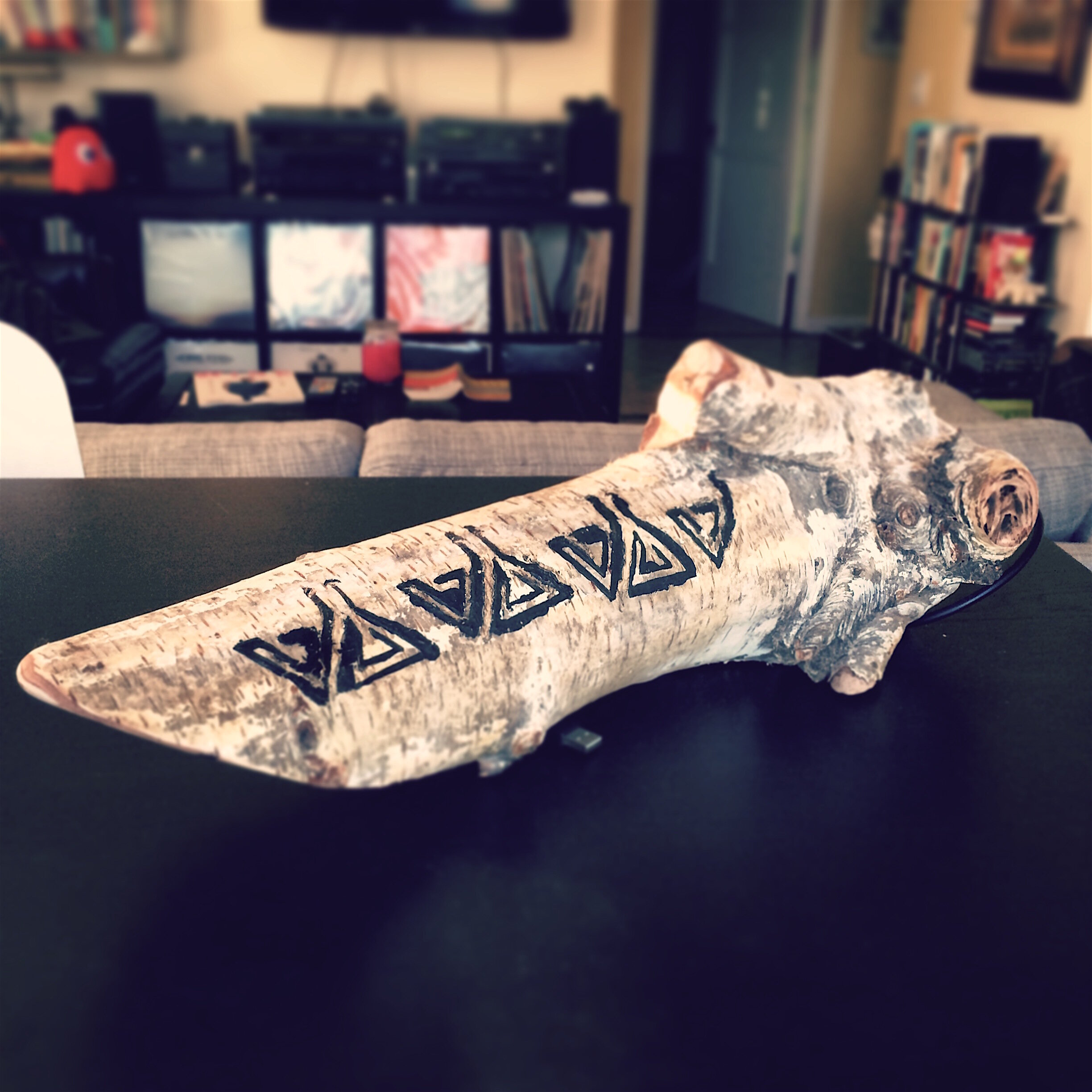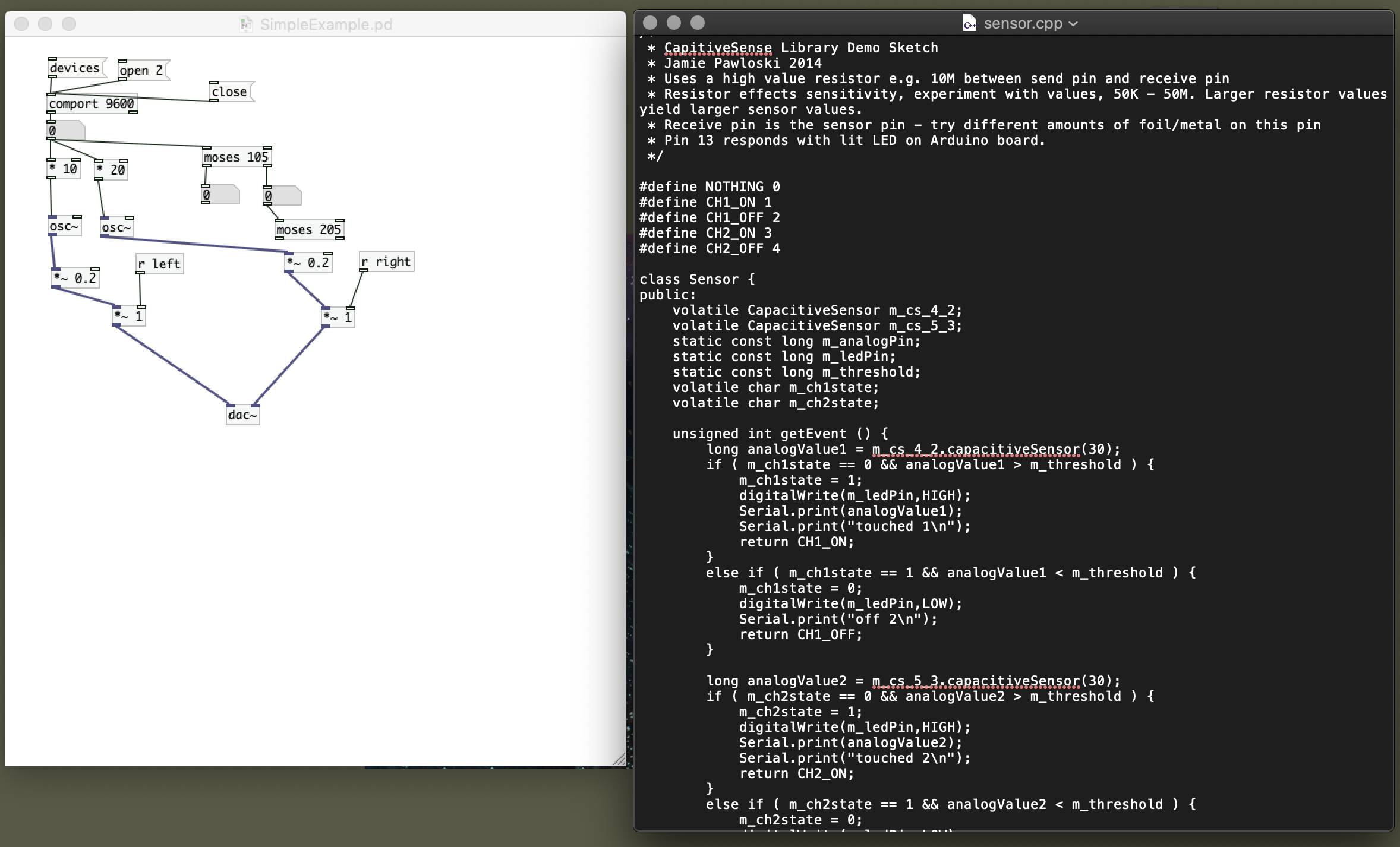Logorithm
A meeting of analog (tactile) and digital (computation) worlds. (2014)
The Logorithm brings into question the importance of physical instruments in a prevalent world of computer technologically driven music. To answer this, I take into account the loss of haptic feedback that comes with playing a physical, resonant instrument. To achieve a more physical interaction between player and instrument, the Logarithm uses conductive paint to conduct electricity by way of triangular designed ‘pads’ that act as electromagnetic proximity sensors (much like Leon Theremin’s instrument, the Theremin). These paint sensors then “sense” a human hand by way of an Arduino micro-controlled computer processor. As the hand becomes closer to the paint (starting at a 1 inch distance), a tone begins to emit, and will continue to emit and have a louder amplitude as the hand becomes closer in proximity. Once touched, an envelope generator will ‘ping’ the tone with a quick attack and medium release, imitating a metallophone instrument (musically tuned metal bar). To achieve the resonant aspects, I was hoping to add a servo motor inside to resonate the played frequencies, but the code running the musical aspect alone was choking the Arduino’s processor, so I never got to add that quality.
As for the musical specifications, The Logorithm was designed to be a self sustained instrument rather than a digital midi type controller. At the time of building this project, I was studying Gamelan music and the Pelog scale. Pelog being a 7 note per octave scale, having characteristics of uneven intervals and tunings that vary from village to village, creating a wholly unique ensemble. I liked the idea of an instrument with a handicap of only having 7 notes and using those notes in an atonal way with western or experimental music.
Material: Birch wood
Micro Processor: Arduino Due
Programming language: Processing (C++)


